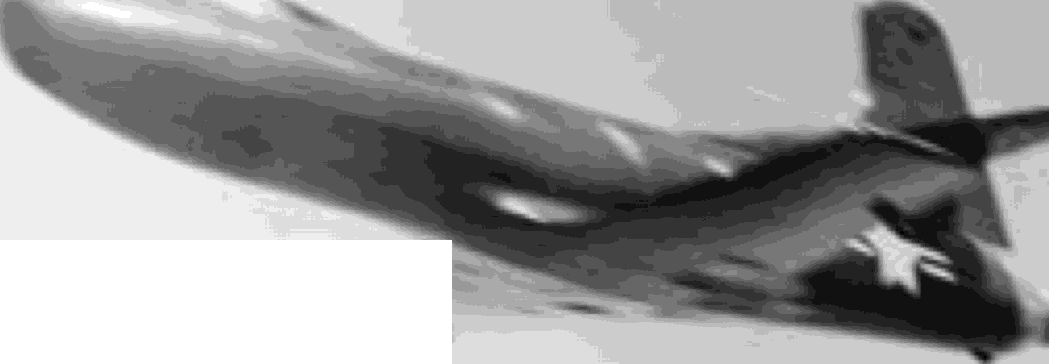
168
UNITED STATES NAVAL AVIATION
1910-1995
1947-Continued
and included installation of two H-8 catapults,
strengthening the flight deck and clearing it of guns,
increasing elevator capacity and adding special provi-
sions for jet aircraft such as blast deflectors, increased
fuel capacity and jet fuel mixers.
Oriskany,
first of
nine carriers modernized under this project, began
conversion at the New York Naval Shipyard on 1
October 1947.
7 June
FAW-10 was disestablished at NAB Sangley
Point, Philippines.
17 June
The Navy awarded a contract to Douglas
for design study and engineering data for a delta
winged fighter. On the basis of the technical informa-
tion thus obtained, the Navy subsequently initiated
development of the XF4D-1.
26 June
Development of low drag bombs was initi-
ated as the Bureau of Aeronautics authorized Douglas
Aircraft (EI Segundo) to undertake design of a bomb
release system with smooth flight characteristics at
subsonic speeds. This development was undertaken to
overcome the aircraft buffeting which was induced by
conventional bombs when carried externally at three-
quarters the speed of sound. The basic goal was
development of an external store shape which could
house conventional bombs, machine guns, rockets,
etc. and be adapted to use as an external fuel tank.
30 June
FAW-18 was disestablished at NAS Agana,
Guam, in the Marianas.
9 July
A Gorgon IV (PTV-2), powered by a subsonic
ram-jet engine, was air-launched from a P-61C and
made a 28-second free flight at the Naval Air Missile
Test Center, Point Mugu, Calif.
24 July
The adaptation of the helicopter to amphibi-
ous warfare was initiated when the Chief of Naval
Operations established a requirement for a type capa-
ble of transporting assault troops from an escort carrier
and setting them down ashore along with their neces-
sary combat equipment and supplies.
26 July
The National Security Act of 1947 became
law providing the most basic reorganization of defense
activities since the creation of the Navy Department in
1798. The law established the National Security
Council, the Central Intelligence Agency, the National
Security Resources Board, the National Military
Establishment and the Office of Secretary of Defense.
Within the National Military Establishment it estab-
lished a third service, the U.S. Air Force, the Joint
Chiefs of Staff, the Research and Development Board
and the Munitions Board. It also defined the United
States Navy as "including such aviation as may be
organic therein."
7 August
An Act of Congress restored the Aeronautical
Engineering Duty Only (AEDO) designation abolished
in 1940, by authorizing the assignment of qualified offi-
cers of the line, including those designated EDO.
13 August
Naval Air Development Station,
Johnsville, Pa., was established replacing the Naval
Aircraft Modification Unit. Its mission was develop-
ment of aircraft electronics, guided missiles and avia-
tion armament.
20 August
Commander Turner F. Caldwell, piloting
the Douglas Skystreak D-558-1, broke the world's
speed record flying at 640.663 mph over the three-
kilometer course at Muroc, Calif.
25 August
Major Marion E. Carl, USMC, flying the
Douglas Sky streak D-558-1, set a new world's speed
record of 650.796 mph over the three-kilometer course
at Muroc, Calif.
25 August
Tests of the Douglas low drag bomb
shape were begun at the Southern California
Cooperative Wind Tunnel at Pasadena, Calif.
"
D-558-1 research ailplane, set
1947
speed record 704422
 |
10 |
 |